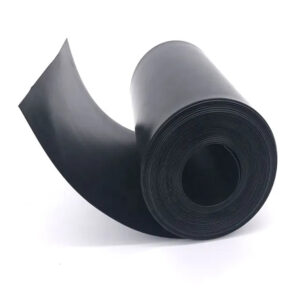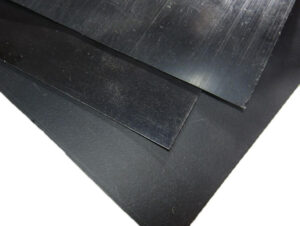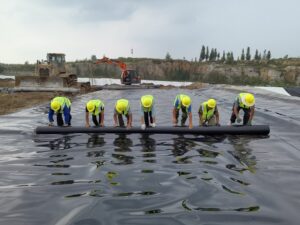Geomembrane anti-penetration performance test
Geomembrane anti-penetration performance testing is performed to evaluate the geomembrane’s ability to prevent the penetration of liquids (usually water) under different conditions.
Water Permeability Test: This is a common method for evaluating a geomembrane’s resistance to water penetration. During the test, the geomembrane sample is placed in water, and its waterproofing performance is evaluated by observing whether water penetrates into the geomembrane within a certain period of time and the penetration rate. ASTM D5397 is a commonly used standard test method for evaluating the water permeability performance of geomembranes.
Gas Permeability Test: This is the method used to measure the gas permeability of a geomembrane. Gas permeability instruments are usually used to measure the rate of gas permeation under certain temperature and pressure conditions. ASTM D1434 is a common standard test method used to evaluate the gas permeability performance of geomembranes.
Diffusion Coefficient Test: This test method is used to measure the diffusion properties of water, gas, or other solutes in a geomembrane. It usually involves measuring the rate of mass transfer across different concentration gradients and calculating the diffusion coefficient. This coefficient can be used to evaluate the impermeability of a geomembrane to specific solutes.
Permeability Trough Test: This is a more complex testing method often used in large geomembrane or underground projects. In the test tank, actual engineering conditions, including soil, water pressure, etc., are simulated to evaluate the anti-penetration performance of the geomembrane. This method is closer to the actual application situation, but requires larger equipment and time.
Pressure Penetration Test: This testing method is used to simulate the performance of geomembranes under varying water pressures. Geomembrane samples are exposed to varying water pressures to evaluate their resistance to penetration. This is important for dams, levees and other projects that need to withstand water pressure.

Dimensional stability of geomembrane
The dimensional stability of the geomembrane refers to whether the size of the geomembrane can remain stable without unacceptable deformation or change under different temperature and humidity conditions. Dimensional stability is one of the important indicators of geomembrane quality, especially in engineering applications that require long-term stability, such as sewage treatment tanks, dams, landfills, etc.
Linear thermal shrinkage rate: Linear thermal shrinkage rate refers to the length change ratio of the geomembrane in a certain direction after being heated. Typically, geomembranes are tested for linear thermal shrinkage at high temperatures to simulate performance in high temperature environments. Linear thermal shrinkage testing is usually performed under laboratory conditions and measured according to relevant standards.
Thermal expansion coefficient: The thermal expansion coefficient indicates the degree of linear expansion or contraction of the geomembrane when the temperature changes. It can be used to predict the dimensional changes of geomembranes at different temperatures. The thermal expansion coefficient is usually expressed in the form of linear expansion coefficient (Linear Expansion Coefficient).
Cooling and heating cycle testing: This testing method simulates the temperature changes of the geomembrane under actual use conditions. The sample is subjected to multiple cooling and heating cycles, and its dimensional changes are measured. This kind of test can better simulate the performance of geomembrane in different seasons and environmental conditions.
Observation of dimensional changes under environmental conditions: In actual engineering applications, the dimensional stability of geomembranes can also be evaluated through actual observations. For example, in projects such as levees or landfills, the geomembrane can be regularly checked for dimensional changes to ensure that it performs as required over the long term.
Dimensional stability testing usually relies on relevant international standards or industry standards and needs to be performed in a laboratory or actual engineering environment. These tests help ensure that the geomembrane remains stable under varying temperature and humidity conditions to meet engineering design requirements and reduce the risk of possible deformation or breakage.
Geomembrane Pressure Penetration Test
The pressure permeability test of geomembranes is a test method used to evaluate the anti-penetration performance of geomembranes under different water pressures. This test is often used to simulate the performance of geomembranes in engineering applications such as dams, levees, and pools that need to withstand water pressure.
Prepare geomembrane samples: Obtain geomembrane samples from production that meet specifications. The size and shape of the specimen should comply with the requirements of the test standard. Typically, samples are cut to appropriate sizes to ensure test repeatability and accuracy.
Preparing a Pressure Vessel: A dedicated pressure vessel is required, usually a steel or plastic vessel with sealing properties. The size and shape of the interior of the container shall comply with the test requirements. There is usually a viewing window or pressure control system in the upper part of the vessel.
Install the geomembrane sample: Install the geomembrane sample inside the pressure vessel, making sure it is completely sealed without any leakage points. One side of the geomembrane is usually in contact with water, while the other side is used to observe changes in performance under water pressure.

Apply water pressure: Begin to gradually increase the water pressure in the container to simulate the pressure the geomembrane will bear underwater. The rate of increase in water pressure is usually specified by testing standards.
Monitoring and Observation: Monitor the performance of the geomembrane sample during the application of water pressure. Observe whether there is moisture penetrating the geomembrane, and if so, detect changes in the amount of penetration. Data such as penetration time, pressure and penetration volume are usually recorded.
End of test: The test lasts for a certain period of time, usually as required by the test standard. Once the test is complete, stop applying water pressure and check the condition of the geomembrane sample.
Result analysis: Based on the test results, evaluate the anti-penetration performance of the geomembrane. This includes determining whether there is water penetration and the rate of penetration. The test results can be used to determine whether the geomembrane meets the requirements of the engineering design.
Author

Founded in 2002, Tinhy's team focuses on the manufacturing, marketing, installation, application and research and development of geosynthetic materials.
View all posts






